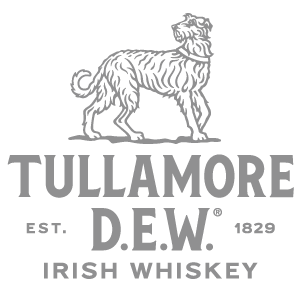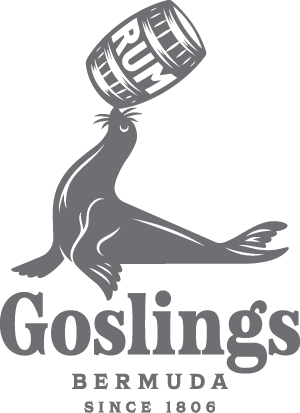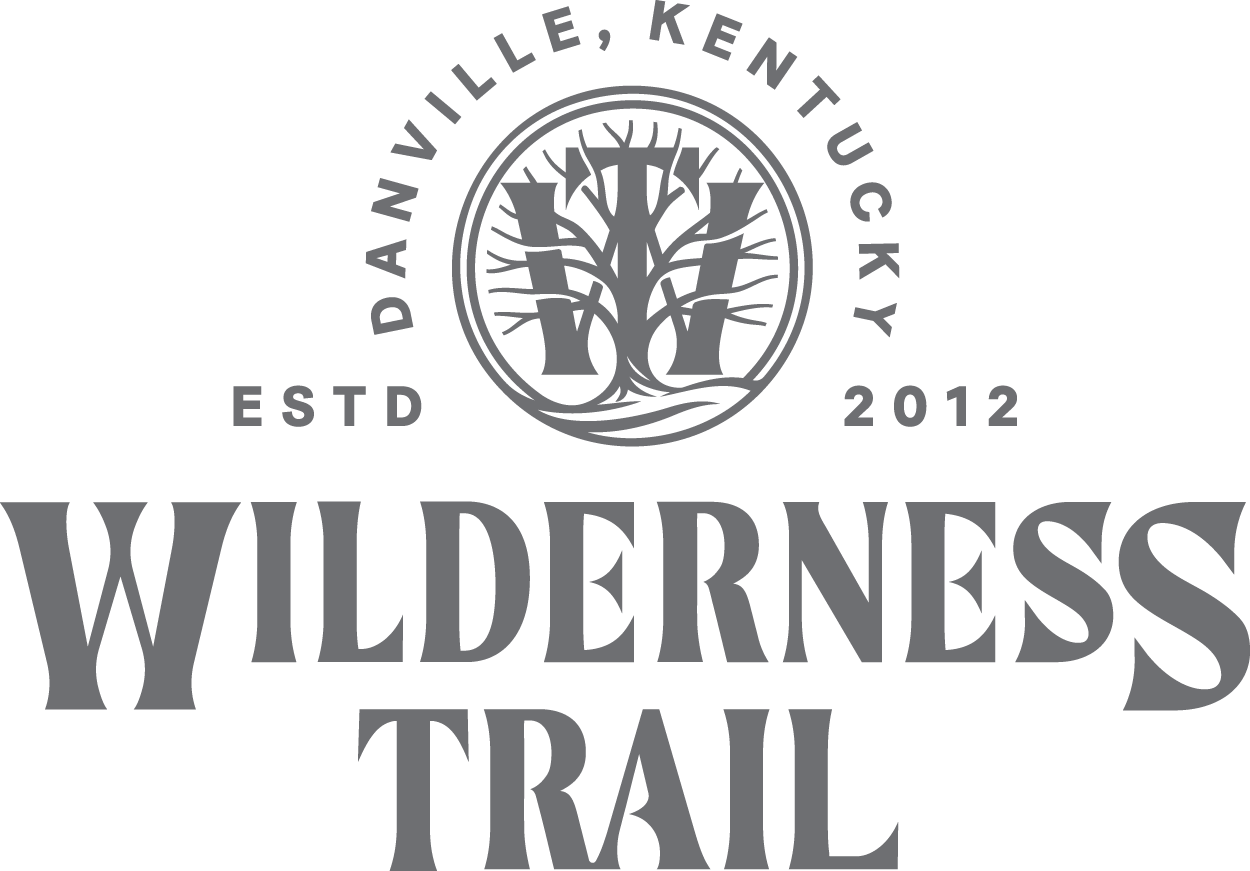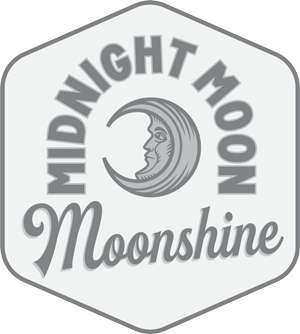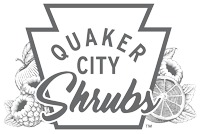Discover Tamworth New Hampshire
This New Hampshire village holds more than you might think

Mt. Chocorua is a constant, dramatic presence for Tamworth villagers. Photo by Kendal J. Bush
It was zero degrees under bright blue skies when I drove into Tamworth one morning in January — the kind of day when you know it’s cold from the way dry snow sweeps across the road like dust. Somewhere between the buzzing Winnipesaukee towns and here I had crossed an invisible divide. The world beyond my windshield now looked like some exclave of the North Country, where the winter wind bites into your skin and the great hustle is far away.
Inside Rosie’s Restaurant on Route 16 a man sat on a stool drinking coffee with The Conway Daily Sun spread out on the counter. He glanced between his paper and the door and stood up to shake my hand when I walked in. Jack Waldron is president of the Wonalancet Out Door Club, one of several such associations in the town of Tamworth, which consists of five distinct villages — Wonalancet in the northwest, South Tamworth in the southwest, Whittier in the southeast, Chocorua in the east and Tamworth proper right in the middle. Wonalancet is one of the best points of access to the Sandwich Range, the line of low mountains at the southern edge of the Whites. The Wonalancet Out Door Club was founded in the 1890s as a chamber of commerce for its namesake village, which had become a destination for city people looking to spend long holidays in its salubrious atmosphere. The club’s mission was to build trails for the visitors. Nowadays, members maintain trails inside the Sandwich Range Wilderness, where strict federal rules dictate how trail work can be done. There are no hotels in Wonalancet anymore.

Writer Anders Morley Photo by Kendal J. Bush
But there are more hikers than ever. There are so many that they have become a public order problem. On weekends, the nearby Ferncroft parking lot can be three times past capacity. The overflow dribbles down both sides of an otherwise-quiet road, in spite of parking prohibitions. Since access to the Sandwich Range from Ferncroft relies on permission to cross private land, this is a public relations problem as well. The granting of permission is a matter of custom, not law, and no one’s indulgence is limitless. Waldron knows that a solution is needed, but like leaders elsewhere in the Whites he has yet to find one. One thing he’s sure of, however, is that recreationalists themselves could be doing more. He recently watched a single party of 14 hikers show up at Ferncroft in nine separate cars.
My plan was to spend two days in Tamworth, and I had wanted to start by talking to Waldron because there was common ground between us. I hiked in the Sandwich Range as a kid and have written extensively about trails and ways of moving through the outdoors less intensively. But I also began with him because I knew that Wonalancet and its trails were a portal to the story of Tamworth’s Golden Age, when the town was a hub for an educated and well-to-do class of summer residents from Massachusetts and New York. John Greenleaf Whittier spent summers in a house on the Bearcamp River (actually in West Ossipee, although he still got a piece of Tamworth named after him). President Grover Cleveland spent summers in Tamworth and so did his youngest son, Francis, who later founded the Barnstormers Theatre, the oldest continuously operated summer theater in the United States and still the town’s most popular draw. William James, the great philosophical psychologist, died at his home in Chocorua. And at the end of the era comes LeGrand Cannon Jr., whose 1942 novel of the frontier experience in Tamworth, “Look to the Mountain,” is familiar to collectors of New Hampshiriana.
Mount Chocorua, the mountain of Cannon’s title, was the obvious attraction for this leisure class. Its summit is uniquely jagged and prominent in the Whites and looks more like it belongs in the Adirondacks. Thrusting skyward above a small lake hemmed in by tall pines, Mount Chocorua presented a scene that came closer than anything else in New Hampshire to the sublime. And like their European counterparts, New England’s Romantics had a taste for half-invented legends bleeding with pathos that somehow underscored this sense of sublimity. The legend of Chocorua fit the bill. Its various versions told the story of an Abenaki chief who refused to fight white settlers, even as his own people were killed or driven off, only to be ultimately betrayed by the settlers and compelled to leap to his death from the precipice that now bears his name.
So, after meeting with Waldron, I drove north to bask for the few minutes I had to spare in the presence of Chocorua myself. As a child I passed this spot frequently, but decades had gone by since I’d last seen the mountain. Unlike most things I remember from when I was a kid, though, Chocorua had somehow gotten better.
I had my doubts about finding the same in the village of Tamworth. I hadn’t been there in a long time either. Fifteen years ago, a man from Philadelphia showed up in town with a bundle of money and bought an old farm to use as a summer home. Later, he purchased two major chunks of commercial real estate on Main Street. Steven Grasse, who earned his money designing high-powered brands for the alcoholic-beverage industry, has since turned the old general store into a café and the once-popular Tamworth Inn into a distillery.
I had read an article that left me with the impression that Grasse had practically bought up all of Tamworth — as though it were one of those western ghost towns you occasionally read about someone carrying off for a few hundred thousand. I found it hard to believe, so I asked Jack Waldron about it at breakfast. He scoffed. Then he seemed amused at the city journalist’s presumption that a town with a history as long and august as Tamworth’s would simply allow itself to be purchased by the highest bidder. Grasse is certainly a household name in town, he allowed, but he is seen in a generally positive light. “Some people were a little upset that there’s no place to eat dinner or get a drink anymore without driving down to 16, now that the Inn is gone,” he says. “But that’s about the extent of it. And if you ask me, it was the drink they cared about more than the dinner!”
The reason I was so curious was that it was Grasse’s businesses, although they’ve been around for a few years now, that got me sent to Tamworth on assignment. And his PR agency arranged for me to be wined and dined, and given a comfortable place to sleep, while I was in town. If nothing else then, he is invested in Tamworth. He knows that good publicity for the town is good publicity for him and vice versa.

Photo by Kendal J. Bush
The Art in the Age Café, which belongs to Grasse, has become a village hub. My lunch there comprised the kind of wholesome food you would never have found here 20 years ago. After a dish of cheesy polenta and sautéed onions garnished with spent distillery grain and fresh herbs, I had a bowl of squash soup with similarly elaborate visual appeal. While I nursed a lingering head cold with a steaming cup of turmeric ginger kapha, Chef Christopher Sharp shot out of the kitchen and plopped down a homemade biscuit he had sliced in half, pan-fried, and plated with a spoonful of the best apple butter I have ever tasted. We talked briefly, then he walked off to chat with two women discussing needlework. “My wife taught me to knit,” I heard Sharp tell them, “but I just kept dropping stitches and finally gave up. I found crocheting went a lot better for me.”

The entrance to the Art in the Age Café prepares visitors for what to expect. Photo by Kendal J. Bush
The café has recently undergone rebranding — not a term one wants to hear in a village often sought out precisely for its noncommercial obscurity. Until last year it was called the Tamworth Lyceum, and the name is still hand-painted in old-fashioned shadowed script across the front gable of the building. The Lyceum sold artisan gifts and local food products. Now the Art in the Age Café serves breakfast and lunch, coffee and tea and specialty soft drinks, and functions as a gathering place where locals can sit and visit or read a book from a neatly curated library of classics by the kinds of authors who would have spent their summers around Tamworth in the old days — from the Transcendentalists and Fireside Poets to modern nature writers.
The lyceum circuit was a 19th-century New England phenomenon, an institution that gave adults an opportunity to continue their education beyond their school years. Esteemed speakers like Emerson and Margaret Fuller would travel from town to town lecturing to a citizenry that was hungry for learning and the perennial refinement of its cultural sensibilities. The curious thing about the Tamworth Lyceum, though, is it was never actually a lyceum in this sense. The name was chosen, and its little library gathered together, to evoke a mystique. It’s a game Steven Grasse plays skillfully.
The name Art in the Age Café is crucial to understanding how it works. The name alludes to an influential 1935 essay by Marxist philosopher Walter Benjamin entitled “Art in the Age of Mechanical Reproduction.” In among a sometimes-abstruse tangle of observation and analysis is Benjamin’s best-known notion, that the authenticity of a work of art derives from a special quality he calls its “aura.” And an artwork’s aura, Benjamin argues, is a function of its having been uniquely created in a particular time and place. If a work of art is separated from the context of its creation, either by removal or by reproduction, its aura is diminished — and at some point it ceases to be art. For Benjamin, the ability to reproduce an art object mechanically had caused a crisis in aesthetics.

Art in the Age Café Photo by Kendal J. Bush
But for Grasse, it’s not a crisis. Or if it is, it’s also an opportunity. His choice of a socialist, modernist thinker as an emblem for his thoroughly capitalist and postmodern project can only be seen as ironic, in the David Foster Wallace sense of that word. Grasse is too old to be a hipster, but he’s all about self-consciousness, complex referentiality, and — I almost hate to say it — pretty good taste. If you try to find something out about the man who is giving Tamworth’s Main Street a makeover by going to the internet, you’ll quickly become lost in a vortex that conflates advertising and art, quality and kitsch, a whirlwind of parody, philosophy and pretension, of allusion and illusion — all of which sums up to an exasperating elusiveness.
This may be just what he wants. Grasse sees himself not only as a marketing man but also a conceptual artist — and both things at the same time. The insight I take away from his stylish tricksterism, considered in the light of Tamworth, is that a façade can actually be an effective instrument for preserving, transmitting, and perhaps even reviving traditions that have been all but lost. But it’s not enough to slap a picture of a guy in a waistcoat toasting a pewter mug on a bottle, say he’s Samuel Adams, and expect us to believe the beer inside comes from a Colonial recipe. Grasse and his team work with particular attention, specificity and style. With a sensibility that is less Benjamin than Baudrillard — the French theorist who argued that our simulation of reality has in effect eclipsed reality itself — he tries to conjure up an aura first and then works backward from that aura, as if he could somehow extract the thing itself, hoping all the while that it will resemble a work of art.
I’d be seeing more of Grasse’s Tamworth later, but for now I needed to come back down to Earth and find a corner for myself. After lunch I drove up to Ferncroft. The sun was halfway down the western sky and the fields of snow against the foot of the mountains glistened in a soft honey atmosphere. I put on my ski-touring boots, clipped into my bindings, and started shuffling up the Old Mast Road, a trail that climbs gently for about two miles to Paugus Pass, a saddle between Mt. Passaconaway and Mt. Paugus. I sweated my way up in under an hour, then turned around and sailed back down in a 10-minute dream of fluff and spruce trees.

The Remick Country Doctor Museum & Farm is the only country doctor museum in New England and one of three in the entire country. Photo by Kendal J. Bush
Back in Tamworth, I paid a visit to the Remick Museum, a working farm and education center left to posterity by Dr. Edwin Remick Jr. The farm was home to multiple generations of Remicks, a prominent local family. The last two generations to live there were father and son Edwin and Edwin Crafts, who together provided Tamworthers with basic medical care, including rural house calls, for 99 years. The son continued seeing patients until his death in 1993, and townspeople still tell stories about him. The upstairs rooms of the main house, where Edwin Jr. and his wife lived, are snapshots of mid-20th-century life in rural New Hampshire, and as I walked through the rooms I thought again about the hazy line between authenticity and imitation. Did everything here suddenly become a simulation — like an aura floating free of an actual object — the moment the Remicks died? It’s a hard case to make when there are cows lolling outside the kitchen window and the smell of biscuits baking in the fireplace wafts up through the ceiling.
The thought followed me across the street to the distillery where tasting room manager Abbey Fife explained her way down a long row of bottles whose shapes and labels, perhaps even more than their contents, embody the effort to create, salvage and sell in a single eloquent act that I understand as central to Steven Grasse’s Tamworth project. I may as well disclose here that I don’t like fakes. When I first read Benjamin’s essay on the reproduction of art at college, I read it earnestly and became consciously suspicious of the authenticity of almost every made object my eyes fell on. Were shutters real if they had never been shut? Why did people put up plastic fences made to look wooden when their houses were surrounded by trees?

Tamworth Distilling’s Skiklubben Aquavit Photo by Kendal J. Bush
The bottles running along the bar in Tamworth Distillery were all in some sense products of the imagination, but they had taken on an air of authenticity by reaching back to some earlier New Hampshire age, when our sense of beauty was still intact. The Chocorua Rye label is printed on uncoated brown stock and includes the legend of Chocorua, told in an 1838 version by R.S.S. Andros, in whole paragraphs of dense old-fashioned lettering. The clean woodcut image on the Skiklubben Aquavit bottle looks like something you’d have found in the bar of the Eastern Slope Inn in the 1930s and is a nod to the historic Nansen Ski Club in Berlin, New Hampshire. Every one of these products plays around inside its own little world of allusions, and each allusion is a foggy mirror image of a past reality that has been carefully combed through to pluck out what’s most compelling — and marketable — in it. Yet not one of these products is more than a few years old. So is this real tradition? Not strictly speaking, but I’m almost ready to say it’s better than a lot of genuine stuff we’ve passed down through time without considering whether it’s worth the trouble.

The tasting room at the distillery is full of tableaus like this one for their Eau de Musc castoreum-flavored whiskey. Photo by Kendal J. Bush
We eventually got to the contents of these exquisite little vessels, and they were nice too. The Eau de Musc, made in small runs, is a bourbon infused with fir needles, raspberries and birch-tar oil and then blended with a distillation of castoreum oil, rendered from the scent gland of an unlucky New Hampshire beaver. Each sip starts with a wild tang that then resolves into the familiar sweet smoothness of bourbon. The Chocorua Rye, distilled from Maine rye, has a sharpness to it that somehow calls to mind the angular summit of the mountain itself. At 100-proof, the Old Man of the Mountain Bourbon is double-pot distilled, which is apparently what gives it a ragged moonshine quality that’s miles away from the elegant finish of the Eau de Musc. But my favorite was the Old Hampshire Applejack, made from three New Hampshire apple varieties and barrel-aged for four years. I love the sublimated notes of tart apple flesh that rise to the back of the nose.
After the tasting, photographer Kendal Bush and I went off to dinner at the Corner House Inn in Center Sandwich, where we found a seat in the cozy upstairs pub with live music and let the affable and expository waiter choose what to bring us. For appetizers he brought pork cracklin’ with a citrus ranch dipping sauce and grilled ahi tuna with an array of Japanese-inspired condiments. For the main I had a rare prime rib with mashed potatoes, while Kendal had a salmon steak that she told me was delicious. Long a Lakes Region favorite, the Corner House was purchased last year by Lexi Townsend, a young entrepreneur dedicated to carrying forward the tradition of providing fine dining that’s accessible to ordinary people. She’s also interested in building community and supporting the local economy, and as part of her refurbishment of the downstairs dining rooms she placed a large order of Tappan chairs, which are hand-built just down the street.

The pub at the Corner House Inn in nearby Center Sandwhich offers Tamworth Distilling spirits, such as the Chocorua straight rye whiskey pictured here. Photo by Kendal J. Bush
In the morning, I was in Tamworth again, where the winter farmers market bustled inside the Town House. A man with a long white beard, rosy cheeks and a Bernie-for-President pin preached on the virtues of local honey. Baker Peg Loughran, a lifelong summer resident who has lived in Tamworth year-round since 1993, told me she learned the basics of her trade during a short apprenticeship at the famous Berkshire Mountain Bakery and has since advanced by trial and error. She launched the market in 2007 with farmer and sometime writer Bob Streeter, whose yogurt is much in demand. He was so busy doling it out to customers that I didn’t have a chance to talk to him. But I did talk to Helen Steele, a retired chemistry teacher who raises sheep and vegetables in Wonalancet. At the winter market she also sells homemade value-added foods, like moussaka, macarons and lamb jerky. “My Hungarian paprika is somewhat famous,” she told me.
Upstairs was a large ballroom-like space with a coved pressed-tin ceiling. A circle of musicians aged between 50 and 75 sat in a corner and took turns leading the group in songs. Taylor Whiteside, a renowned New Hampshire folk singer, sat in the circle with his guitar and fiddle and gave musical advice to anyone who wanted it. Others played guitars, a mandolin, an autoharp, a squeeze box and a bodhran. I sat and listened to a couple of Utah Phillips songs and then went off to find Kendal.
From the Great Hill Fire Tower, you see Tamworth Village the way a bird does. The 360-degree-view takes in the Maine hills to the east, the Ossipee Mountains to the south, and in the north and west the long wave of the Sandwich Range appears to wash south and flatten out below Mount Israel, near Center Sandwich. It was almost dusk by the time we had our fill of the view and walked back down the trail to drive to our final Tamworth appointment.

The monthly pizza night hosted by Hank and Heather Letarte Photo by Kendal J. Bush
Hank Letarte operates White Gates Farm with his wife Heather and says he makes the best pizza in New Hampshire. He hands me a slice he’s just pulled from the wood-fired brick oven he built inside an old horse trailer. The Letartes host pizza nights once a week in the summer and once a month in the winter, open to all. In the summer, they’re outside in the fields with a view of the surrounding hills and the sunset. In the winter, Hank backs his oven up to an opening in the greenhouse, and everyone piles in from the cold. There’s always live music, and tonight we’re entertained by a bluegrass quintet made of Tamworth locals who play beautifully together. People come in dressed for the cold with wine or beer brought from home, place their pizza orders with Heather, then choose a table and mingle with their neighbors while they wait for their food. “This is real N’Hampsha,” Letarte says, surveying the scene. “You just wouldn’t get this in Massachusetts.”

Hank Letarte at work managing the wood-fired pizza oven Photo by Kendal J. Bush
Of course, I like to think he’s right. But what does real New Hampshire mean? And real Tamworth? I wasn’t sure I knew anymore.
Outside, the snow had been coming down for about an hour. Kendal headed home in hopes of beating the brunt of it, and I got in my car to drive through the dark woods to the house I’d been given to stay in nearby. The house was stashed among hemlocks at a bend in a black brook that came racing down the rocks between pillows of snow. In the morning sun, I had wanted to sit on the porch and write haikus, but now, in the pitch dark where I could hear the brook and feel snowflakes tickling my cheeks but see almost nothing, it occurred to me that I should go inside and read Whittier’s “Snowbound.” How would that be for atmosphere! But when I realized how long it was, I doubted I would reach the end before drifting off. So instead I remembered the words of a Kate Wolf song the singer at the Corner House Inn had closed with the night before, when everyone had gone home. It seemed a fitting way to end.
I’ve been sifting through the layers
Of dusty books and faded papers.
They tell a story that I used to know,
But it was one that happened long ago.
More photos of Tamworth — Photos by Kendal J. Bush









